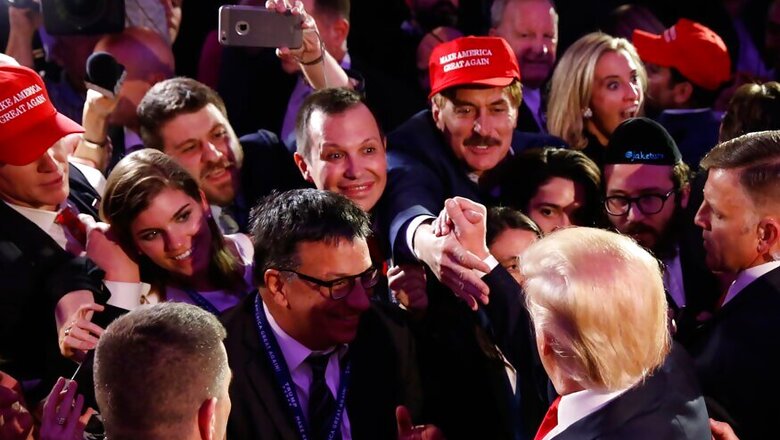
views
Donald Trump pulled off one of the biggest upsets in American political history when he toppled Hillary Clinton in the US presidential election on Tuesday - and he did it using far less cash than his rival.
Relying heavily on an unorthodox mix of social media, unfiltered rhetoric, and a knack for winning free TV time, the New York real estate magnate likely paid less than $5 per vote during his insurgent White House bid, about half what Clinton paid, according to a Reuters analysis of campaign finance records and voting data. Those figures assume the candidates spent all the funds they raised.
Trump's cost-effective win has upended prevailing concepts about the influence of money in American politics and raised the question of whether a lean, media-savvy campaign can become the new model for winning office in the United States.
Political strategists and academics tend to agree, however, that Trump's performance would be tough to repeat. A household name for his luxury brand resorts, reality TV stardom, and ability to surround himself with non-stop controversy, Trump held advantages that many political candidates lack.
"I think this is a case where Trump had unique characteristics as a candidate that allowed him to pursue a different type of strategy," said Tony Corrado, a professor of government at Colby College in Maine.
In total, Trump raised at least $270 million since launching his campaign in June 2015, a little more than a third of the money that Obama's re-election campaign spent in 2012, according to the most recent filings with the Federal Elections Commission.
With vote counting wrapping up in the early hours of Wednesday, Trump had won some 57 million votes nationwide in the general election. That amounts to less than $5 per vote for the $270 million he spent.
Also Read: Top Goals for President Donald Trump, hurdles in front of him
According to data analytics firm mediaQuant, Trump garnered about $5 billion worth of free media coverage during the election campaign, more than twice the amount earned by Clinton, a lifelong politician who served as secretary of state, senator, and first lady at different times in her career.
mediaQuant adds up all the unpaid coverage the candidates earn in newspapers, magazines and social media and then compares the sum to what a comparable amount of coverage, with the same kind of reach, would have cost in advertising.
Trump has also frequently dominated news cycles with provocative rhetoric that breaks taboos, including unabashed insults targeting women he dislikes over Twitter, or unusual policy proscriptions like his call to temporarily bang Muslims from entering the country to prevent domestic attacks, or to force Mexico to pay for a multi-billion dollar border wall to keep out immigrants.
BIG DONORS
Trump made his self-funding a selling point early in his campaign as he fended off 16 Republican rivals for the party nomination, arguing that by eschewing big donors he wasn’t beholden to special interests.
But once he secured the nomination, Trump changed course and began fundraising in earnest, replicating the small dollar fundraising juggernaut of another insurgent candidate, Democrat Bernie Sanders, along the way.
Clinton raised at least $521 million, according to filings.
The former secretary of state stuck to the more traditional campaigning model of launching expensive television ads and funding hundreds of staffers who fanned across the country to work to increase voter turnout on Election Day.
She spent more than $237 million on television ads and more than $42 million on hundreds of staffers.
She also benefited from spending by the Super PACs supporting her candidacy, which are allowed to raise and spend unlimited amounts of money but cannot coordinate directly with the campaign. More than a dozen people, including hedge fund magnate Donald Sussman and global financier George Soros, wrote multi-million checks to Priorities USA, the primary PAC supporting her campaign, according to filings.
Michael Traugott, a political science professor at the University of Michigan said the traditional US model for picking presidents might seem odd to people in other nations, where campaigns are shorter and require less cash.
"The system is clearly broken,” he said.
Also Read: Donald Trump Becomes 45th US President: What it Means For India


















Comments
0 comment